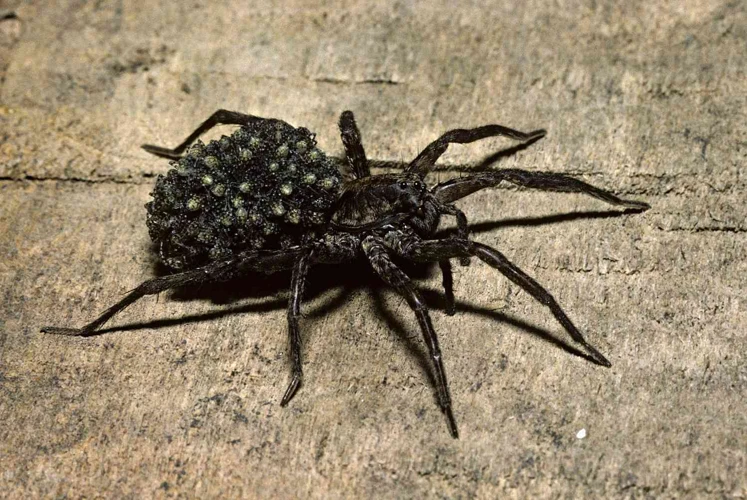As we explore the diverse and intricate world of wolf spiders, we must take a closer look at the fascinating topic of microhabitats. Microhabitats are the small, localized environments within a larger ecosystem that provide unique living conditions for various species. Understanding microhabitats is crucial for understanding the behavior, adaptations, and survival of a wide range of organisms, including the wolf spider. In this article, we will delve into the different types of microhabitats that wolf spiders can be found in, their adaptations to their surroundings, and the threats facing their delicate ecosystems. Join us on a journey of discovery as we explore the world of these intriguing arachnids.
What Are Microhabitats?
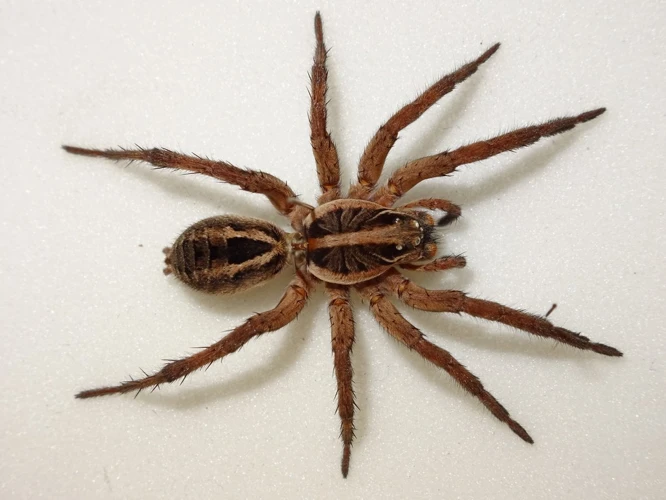
As we explore the diverse range of habitats where wolf spiders can be found, it is essential to examine the concept of microhabitats. So, what exactly are microhabitats? In ecological terms, microhabitats refer to small-scale environments with specific conditions that differ from their immediate surroundings. These unique habitats provide shelter, food, and other resources for different species, including wolf spiders. Understanding the different types of microhabitats that wolf spiders occupy can provide valuable insights into their ecology, behavior, and overall conservation. In the following sections, we will delve deeper into the importance and types of microhabitats and their association with wolf spiders. For more information about wolf spider habitats in general, check out our article on Wolf Spider Habitats.
The Importance of Microhabitat
Microhabitats are the small, specific environments within a larger habitat that provide unique conditions for a wide variety of species, including the wolf spider. These microhabitats are critical not only for the survival of individual species, but also for the health and stability of the ecosystem as a whole. The importance of microhabitats can be seen in the variety of biological, physical, and chemical factors that influence them.
Factors such as temperature, humidity, light intensity, and soil moisture play a critical role in the survival and reproduction of the wolf spider species that inhabit these microhabitats. Other factors such as the presence of prey, predators, and competitors can have significant effects on the behavior and distribution of wolf spiders in their respective habitats.
The significance of microhabitats is often underestimated, but they are vital components of any ecosystem. They help maintain biodiversity by serving as shelters for various species, and even small changes in their conditions can have significant impacts on the populations of those species. Microhabitats can also serve as indicators of broader ecosystem health, as changes in their conditions can sometimes indicate larger environmental issues that need to be addressed.
In understanding the importance of microhabitats, it is essential to consider the ecological role of wolf spiders. These arachnids play important roles in controlling populations of insects and other arthropods in their respective habitats, making them critical elements of the food web. They also contribute to soil health through their burrowing activities, which help to aerate and fertilize the soil.
Microhabitats can be easily disrupted through various disruptive activities like human activities, climate change and other environmental factors. Conserving these habitats is essential to maintain the balance of the ecosystem, protect individual species and preserve biodiversity. Creating awareness on the significance of microhabitats is vital for establishing conservation efforts, research, education, and protection of wolf spider habitats and biodiversity.
Understanding the importance of microhabitats is crucial to the conservation efforts of the wolf spider species, and to the broader health and sustainability of the ecosystem as a whole. Visit /role-ecosystem-wolf-spiders/ to gain more in-depth knowledge of wolf spider’s ecology and their role in the ecosystem.
Types of Microhabitats
Microhabitats are the small, specific environments that can be found within larger habitats. These specialized areas typically have unique conditions that suit certain types of organisms. In the case of wolf spiders, there are many different types of microhabitats that can be found around the world. Here are some examples:
– Leaf litter: Wolf spiders are often found living in the layer of decomposing plant material that accumulates on the forest floor. This provides them with cover and protection from predators as they hunt for prey.
– Soil: Some species of wolf spiders burrow into the soil to lay their eggs and seek shelter from extreme temperatures. They may also hunt for insects and other small arthropods in the soil.
– Low vegetation: In grasslands and meadows, wolf spiders may take shelter in the dense vegetation that grows close to the ground. This allows them to easily capture prey that ventures too close.
– Rocks and logs: Wolf spiders can often be found hiding under rocks, logs, and other natural debris. This provides them with cover and protection, and may also offer a source of moisture in arid environments.
– Water: Some species of wolf spiders are adapted to living near water, either in aquatic habitats like streams and ponds, or in riparian (streamside) environments. These spiders may be able to walk on the surface of the water, or they may dive and swim to capture prey.
No matter the specific type of microhabitat that a wolf spider calls home, each provides its own set of challenges and opportunities. Whether using camouflage and coloration to blend in with their surroundings, or burrowing and building webs to catch prey, these spiders have evolved a wide range of adaptations for survival. However, they also face many threats from human activities and environmental factors. To learn more about the challenges facing wolf spider habitats and conservation efforts to protect them, visit our guide to understanding wolf spider habitats and conservation.
Microhabitats of Wolf Spiders
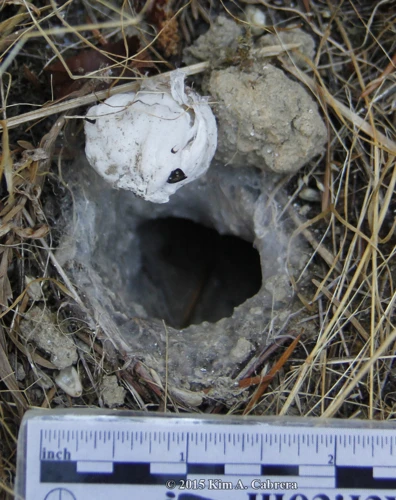
As fascinating and elusive creatures, wolf spiders have adapted to a diverse range of microhabitats over millions of years. Though often associated with forests and woodlands, these arachnids inhabit various environments, including grasslands, deserts, aquatic areas, and riparian zones. Understanding their unique habitat requirements is essential for protecting wolf spiders and the broader biodiversity they promote. Let’s take a closer look at the microhabitats that wolf spiders call home. For more information on wolf spider habitats and the factors that affect them, readers can refer to this previous section.
Forests and Woodlands
Wolf spiders are a diverse group of arachnids that inhabit a wide range of microhabitats. One of the most common microhabitats for wolf spiders is forests and woodlands. These areas provide many benefits, such as a diverse range of prey and shelter from predators. However, not all forests and woodlands are created equal in terms of suitability for wolf spiders.
Here are some of the factors that affect wolf spider populations in forests and woodlands:
- Tree type: Different tree species provide different levels of shelter and prey. For example, areas dominated by conifer trees tend to have fewer prey species compared to areas dominated by deciduous trees.
- Vegetation structure: The density and composition of understory vegetation can affect the availability of shelter and prey.
- Moisture: Both moisture and temperature play a role in determining suitable microhabitats for wolf spiders. Some species are adapted to moist environments, while others prefer drier conditions.
There are also several types of forests and woodlands where wolf spiders can be found. For instance, boreal forests in northern areas are home to several wolf spider species adapted to the harsh, cold conditions, while tropical rainforests provide a humid, diverse microhabitat with abundant prey. Additionally, some wolf spider species are specific to certain types of forests for example in Russia a larch forest and are not found elsewhere.
Unfortunately, human activities can have a negative impact on wolf spider populations in forests and woodlands. Deforestation, logging, and fragmentation of natural habitats can all reduce the availability of suitable microhabitats for these arachnids. As a result, efforts to conserve these species may require concerted action to protect and restore their preferred forest and woodland microhabitats.
Grasslands, Meadows, and Fields
Grasslands, meadows, and fields are another microhabitat where wolf spiders can be found. These open areas provide a different set of challenges and opportunities for wolf spiders compared to wooded environments.
One adaptation of wolf spiders for this microhabitat is their ability to run quickly in open spaces. The lack of cover means they must rely on speed to escape predators or catch prey. Their coloration may change to better blend in with the soil or vegetation in these areas.
Some species of wolf spiders in grasslands, meadows, and fields hunt by waiting near the entrance of burrows or by positioning themselves near small rocks or plants where insects may be abundant. They may also use silk draglines to traverse areas quickly while searching for prey.
Table:
| Microhabitat | Adaptations |
|---|---|
| Grasslands, Meadows, and Fields | Quick running speed, coloration change, hunting near burrows or plants, silk draglines |
Despite the challenges of living in open areas, wolf spiders may find plenty of food in these microhabitats. Many insects thrive in fields and meadows, providing a consistent source of prey for wolf spiders. However, human activity such as development or excessive use of pesticides can disrupt these microhabitats and lead to declines in wolf spider populations. Conserving these areas is essential for maintaining biodiversity and the health of ecosystems.
Deserts and Arid Regions
Wolf spiders are known for their ability to adapt to a wide range of environments, including deserts and arid regions. These habitats present unique challenges that the spiders must overcome in order to survive.
Some of the microhabitats found in deserts and arid regions that wolf spiders may inhabit include:
- Sandy desert flats
- Rock formations and outcroppings
- Sand dunes
- Salt flats
In order to survive in these harsh environments, wolf spiders have developed a number of adaptations. For example, they have an efficient water retention system that allows them to live in areas where water is scarce. Additionally, they have adapted to the extreme temperatures of the desert by regulating their body temperature and hiding during the hottest parts of the day.
Camouflage is another important adaptation for wolf spiders in desert environments. Many species have evolved to match the color of their surroundings, making them difficult to spot by predators and prey alike. For example, the Arizona desert wolf spider has a brownish-yellow color that blends in with the sand.
Wolf spiders that inhabit deserts and arid regions also have unique hunting strategies. Some species, like the giant desert wolf spider, ambush their prey by lying in wait in their burrows. Others, like the striped wolf spider, use their keen sense of vibration to detect the movement of prey across the sand, ambushing them from below.
Despite their adaptations, wolf spiders in arid regions face many threats. Human activities such as urbanization and overgrazing can destroy or fragment their habitats, making it difficult for the spiders to find suitable microhabitats. Climate change, including droughts and rising temperatures, also poses a threat to their survival.
Conservation efforts are crucial to preserve the microhabitats of wolf spiders in deserts and arid regions. Efforts to protect their habitats and reduce human impact are important steps in preserving the species. Research and education can also aid in understanding their adaptations and behaviors in these unique environments.
Aquatic and Riparian Environments
Aquatic and riparian environments are crucial microhabitats for many species of wolf spiders. These microhabitats are characterized by aquatic or semi-aquatic ecosystems, such as rivers, streams, and wetlands, where these spiders have adapted unique strategies to survive. Let’s take a closer look at some of these adaptations in the table below:
| Adaptation | Description |
|---|---|
| Water-repellent exoskeleton | Wolf spiders that live in aquatic or riparian environments have evolved a water-repellent exoskeleton that helps them move easily on the surface of the water and prevents them from getting wet. This adaptation also helps avoid predators that may be lurking underwater. |
| Ability to dive | Some species of wolf spiders have the ability to dive and stay underwater for extended periods. This allows them to hunt for prey, build underwater nests, and escape predators that cannot follow them into the water. |
| Use of surface tension | Wolf spiders living in water-rich environments use the surface tension of water to their advantage. They create a microscopic air bubble around their body that allows them to walk on the surface of the water without sinking. Using this adaptation, they can hunt and travel without getting wet. |
| Building silk retreats | Some wolf spiders build silk retreats underwater, where they can live and lay eggs. These retreats consist of a tunnel with an opening to the surface that allows the spiders to breathe air while staying protected from predators. |
As you can see, wolf spiders have several unique adaptations that allow them to thrive in aquatic and riparian environments. By utilizing these strategies, they are able to find food, build homes, and evade predators in these watery habitats. However, these microhabitats are also threatened by human activities and environmental factors, which we will discuss in more detail later in this article.
Adaptations for Microhabitats
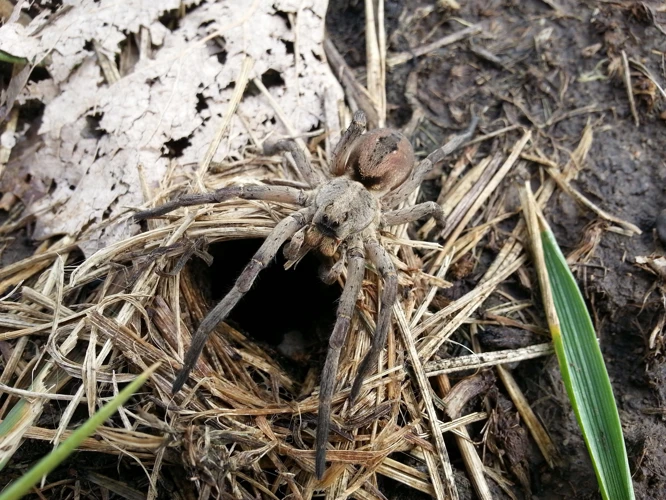
As the microhabitats of wolf spiders differ significantly, they have developed various unique adaptations to survive in their respective environments. These adaptations include physical features like camouflage and coloration, and behavioral traits like web building and burrowing. Let’s delve deeper into the fascinating world of wolf spider adaptations.
Camouflage and Coloration
The microhabitats of wolf spiders are diverse, and as a result, these spiders have developed various adaptations to survive in different environments. Camouflage and coloration are essential tools for wolf spiders to evade predators and catch prey. Wolf spiders have evolved unique coloration and patterns on their body that mimic the colors and patterns of their surroundings.
Here are some examples of how wolf spiders use camouflage and coloration in different microhabitats:
- In forested areas, wolf spiders blend in with the brown and green leaves on the ground. Some species have stripes or spots on their body that look like tree bark or fallen twigs. This helps them to remain hidden from predators and sneak up on their prey.
- In grasslands and meadows, wolf spiders use their coloration to blend in with the tall grass and wildflowers. Some species have bright yellow or green markings on their body that match the color of the vegetation. Others have stripes or spots that resemble the patterns on the stems and leaves of plants.
- In deserts and arid regions, wolf spiders have developed light-colored bodies that blend in with the sand and rocks. Some species have sandy brown or pale yellow coloration that makes them almost invisible in the harsh desert environment.
- In aquatic and riparian environments, wolf spiders have adapted to have water-repellent hair on their body that helps them move on the surface of the water without getting wet. Some species have dark or reflective bodies that camouflage in the shadows of rocks or underwater plants.
Overall, wolf spiders’ coloration and camouflage are crucial for their survival. Being able to blend in with their surroundings allows them to remain hidden from predators and sneak up on their prey. However, camouflage is not the only adaptation that wolf spiders have developed to survive in different microhabitats. They have also developed web-building and burrowing behaviors and other behavioral adaptations that help them thrive in different environments.
Web Building and Burrowing
Adaptations for Microhabitats: Web Building and Burrowing
Wolf spiders are known for their adeptness at building webs and burrows, which allow them to efficiently hunt prey and protect themselves from predators. These intricate structures vary depending on the wolf spider’s microhabitat.
| Microhabitat | Web Building and Burrowing Characteristics |
|---|---|
| Forests and Woodlands | Wolf spiders in forests and woodlands typically build sheet webs, which are horizontal webs that are flat and extend for long distances. These webs allow the spiders to catch prey such as ants and beetles that move across the forest floor. The spiders also burrow under leaves, logs, and other debris to hide from predators. |
| Grasslands, Meadows, and Fields | Wolf spiders in grasslands, meadows, and fields typically build funnel webs. These are vertical webs that allow the spiders to quickly run out and catch prey that passes by. These spiders also burrow into the ground to seek shelter from extreme temperatures and predators. |
| Deserts and Arid Regions | Wolf spiders in deserts and arid regions burrow into the ground to escape the heat and hide from predators. They also build funnel webs around the entrances of their burrows to catch prey that may pass by. |
| Aquatic and Riparian Environments | Wolf spiders in aquatic and riparian environments build dome-shaped webs that float on the water’s surface. These spiders can also burrow into the sand or mud near the water’s edge to hide from predators. They use their webs to catch aquatic insects and other small prey that live in the water. |
The ability to build webs and burrows is a crucial adaptation that allows wolf spiders to survive in their respective microhabitats. These structures provide shelter from predators and extreme weather conditions, as well as serve as an efficient method of catching prey.
Behavioral Adaptations
The behavioral adaptations of wolf spiders are key to their success in various microhabitats. These spiders are versatile predators that have developed several techniques to hunt for prey and avoid potential predators.
One of their most important behavioral adaptations is their hunting strategy. Instead of building webs to capture their prey, wolf spiders actively hunt down their victims. They have sharp senses and excellent eyesight, and they use these to locate their prey from a distance. When they find a suitable target, they approach it cautiously, relying on their speed, agility, and stealth to avoid detection. Once they are close enough, they pounce on their prey and immobilize it with a venomous bite.
Another adaptation that enhances their hunting success is their ability to change their behavior in response to their surroundings. For example, when they are in environments with low prey density, wolf spiders tend to become more aggressive and more active in their hunting. On the other hand, when they are in environments with high prey density, they tend to be less aggressive, relying instead on the abundance of prey to meet their needs.
In addition to their hunting tactics, wolf spiders use a variety of behaviors to avoid their predators. One of the most effective is their ability to freeze in place when they sense danger. When they do this, they become almost invisible, blending in perfectly with their surroundings. This behavior, known as “crypsis,” makes it difficult for predators to detect them.
Another adaptation that helps wolf spiders avoid predators is their ability to jump. They can leap great distances relative to their size, which enables them to escape danger quickly. This adaptation is especially useful when they are confronted with larger predators, such as birds or rodents.
The behavioral adaptations of wolf spiders are crucial to their survival in different microhabitats. By being skilled hunters, adapting their behavior to their environment, and avoiding predators through crypsis and jumping, these spiders can thrive in a wide range of conditions.
| Adaptations | Description |
|---|---|
| Hunting strategy | Actively hunting down prey instead of building webs, relying on their speed, agility, and stealth to pursue and immobilize prey with a venomous bite |
| Response to surroundings | Becoming more aggressive in low prey density environments, or less aggressive in high prey density environments |
| Crypsis | Freezing in place when sensing danger, and blending in with the environment to avoid detection by predators |
| Jumping | Leaping great distances relative to their size to escape danger, especially when confronted with larger predators |
Threats to Microhabitats of Wolf Spiders
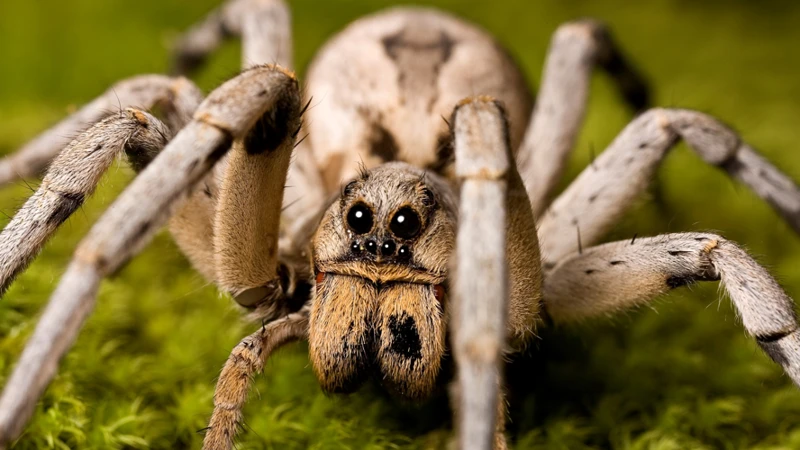
The survival of wolf spiders heavily relies on the availability and quality of their microhabitats. Unfortunately, these microhabitats are currently facing several threats that endanger the spider’s population. It is essential to understand these threats and their impact to develop effective conservation strategies. In this section, we explore the various threats that wolf spider microhabitats face and their potential consequences. From human activities to climate change, the challenges are significant and manifold. Let us delve deeper into these threats and understand how they could affect wolf spider populations in the future.
Human Activities
The microhabitats of wolf spiders are facing numerous threats due to various human activities. Some of the most common human-induced threats to these habitats include:
- Deforestation: Clearing of forests and woodlands for timber, agriculture, and settlement have led to a significant loss of spider habitats. This has resulted in a decline in the number of wolf spiders found in these areas.
- Pollution: Human activities such as industrialization, mining, and oil spills have led to soil and water pollution. This pollution not only reduces the quality of the microhabitats but also poses a risk to the survival of wolf spiders and other species.
- Urbanization: Urban areas have expanded rapidly, leading to the destruction of natural habitats and loss of biodiversity. Wolf spiders that once lived in these areas have been displaced, leading to a decline in their populations.
- Intensive Agriculture: Modern agriculture practices such as use of pesticides, herbicides, and fertilizers have resulted in the contamination of microhabitats and killing of wolf spiders and other beneficial insects.
- Overfishing: Overfishing and degradation of aquatic environments have also led to the decline of wolf spiders that rely on these areas for food and shelter.
These human activities have put the survival of wolf spiders and their microhabitats at risk. It is, therefore, crucial to take measures to protect and conserve these habitats to ensure the survival of wolf spiders and other species.
Climate Change
Climate change is one of the biggest threats to microhabitats of wolf spiders. It has been observed that with increasing temperatures, rainfall patterns have also changed, leading to droughts and floods in different regions of the world. These changes have a direct impact on the habitats and availability of prey for wolf spiders.
The table below shows some of the effects of climate change on the four types of microhabitats of wolf spiders:
| Microhabitat Type | Effects of Climate Change |
|---|---|
| Forests and Woodlands | Increase in forest fires, decrease in tree cover, changes in vegetation patterns, and soil erosion |
| Grasslands, Meadows, and Fields | Changes in precipitation patterns, an increase in invasive species, and degradation of soil quality |
| Deserts and Arid Regions | Increase in temperature, changes in rainfall patterns, and desertification |
| Aquatic and Riparian Environments | Changes in water quality, increase in temperature, and changes in flow patterns |
These changes in microhabitats due to climate change can negatively affect the population densities and distribution of wolf spiders. The changes can also affect the population densities and distribution of the prey species, which can ultimately have a cascading effect on the entire food web within the microhabitats.
It is imperative to take steps to mitigate climate change in order to safeguard the microhabitats of wolf spiders and ensure their survival in the future.
Other Environmental Factors
Wolf spiders are not only faced with threats from human activities and climate change but also by various environmental factors. These factors include:
- Soil Contamination – Contamination of soil can affect the microorganisms and small insects that live in the soil, thus reducing the food source for wolf spiders.
- Water Pollution – Pollution of water affects the aquatic ecosystems that support many species, including wolf spiders. The water can become toxic or contaminated, leading to the death of aquatic creatures, which will disrupt the food chain and affect the wolf spider population.
- Loss of Habitat Diversity – Loss of habitat diversity occurs when a certain habitat becomes too uniform, leading to the dominance of certain species. This reduces food availability and creates competition among species, including wolf spiders that may not thrive in such conditions.
- Changes in Land Use – Changes in land use such as deforestation, urbanization, and clearing of land for agriculture, can severely impact the population of wolf spiders by destroying their habitats and reducing their food availability.
- Introduction of Non-Native Species – Non-native species can disrupt the food chain, prey on native wolf spider species, or serve as competitors for food resources, all of which can impact wolf spiders’ survival rate.
These environmental factors present significant challenges to the survival of wolf spiders in various microhabitats. It is crucial to address these factors collectively to prevent further damage to the wolf spider population and their habitats.
Conservation Efforts
As the world becomes increasingly aware of the importance of preserving biodiversity, conservation efforts have become essential. Species like wolf spiders play a crucial role in their respective ecosystems, which is why their microhabitats must be protected. In this section, we will examine some of the most critical initiatives aimed at preserving the diverse microhabitats of wolf spiders. We will explore the measures taken to protect these microhabitats, educate society about their importance, and promote research to better understand these unique ecosystems. Let’s dive into the world of conservation efforts for wolf spider microhabitats.
Protecting Microhabitats and Biodiversity
Conserving microhabitats is crucial for protecting the diversity of species that depend on them. The habitats of wolf spiders, in particular, are threatened by human activities such as deforestation, urbanization, and agriculture. To preserve these essential habitats, several measures can be taken.
One of the most significant actions that can be taken to protect microhabitats is the creation of protected areas. Governments, non-profit organizations, and communities can establish national parks, wildlife sanctuaries, and other protected areas where natural habitats can be conserved and wildlife can thrive. By designating a specific location for conservation with strict rules and regulations, the biodiversity and microhabitats of wolf spiders can be protected.
Additionally, restoring damaged habitats, like forests, and replanting native vegetation can help reverse the negative effects on the microhabitats of wolf spiders. This can be done through initiatives such as reforestation programs.
Educational programs and awareness campaigns aimed at the general public can also play a significant role in the conservation of wolf spiders and their microhabitats. By educating people about the importance of microhabitats and the threats they face, awareness can be increased among communities, and better understanding of the need for conservation of these habitats can be developed.
The table below outlines some of the measures that can be taken to protect the microhabitats of wolf spiders:
| Measures | Explanation |
|---|---|
| Establishment of Protected Areas | Creating national parks and sanctuaries helps regulate human activities and protect biodiversity. |
| Restoration of Damaged Habitats | Reforestation programs and the restoration of damaged habitats help revive the function and health of microhabitats. |
| Educational Programs and Awareness Campaigns | Education and awareness campaigns aimed at the general public can help increase awareness about the importance of microhabitats and lead to better conservation efforts. |
Protecting the microhabitats of wolf spiders is not an easy task, but with the proper actions and measures, it is possible. It is crucial to recognize the significance of microhabitats for the survival of species and take steps to conserve them.
Research and Education
Research and education play a vital role in the conservation of wolf spiders’ microhabitats. Scientists and researchers continue to conduct studies to understand the spider’s behavior, ecology, and the effects of environmental factors on their habitats. The following are the ways in which research and education can help in the conservation of wolf spider microhabitats:
- Identifying Threats: Research can help identify the threats to the spider habitats. Scientists can use environmental monitoring to identify the effects of climate change, agricultural practices, deforestation, and other human-induced factors that can affect the spider’s habitats.
- Developing Conservation Strategies: Studies can help develop practical conservation strategies that can help in the preservation of wolf spider microhabitats. For instance, researchers can identify the best habitat restoration methods, including how to restore the ideal vegetation cover, and improving the quality of soil in the habitats.
- Creating Awareness: Education plays a crucial role in creating awareness about the threats to the wolf spider habitats. Educating the public on the importance of conserving and protecting the spider habitats can help in minimizing the negative impacts of human activities on these habitats.
- Collaboration: Collaboration between scientists and policymakers can help in the development of policies that protect wolf spider microhabitats. Additionally, collaboration among researchers can also help in advancing scientific knowledge on the spider’s ecology and behavior, which can help in making informed conservation decisions.
Research and education are fundamental in the conservation of wolf spiders’ microhabitats. Studies can help in identifying threats, developing conservation strategies, creating awareness, and promoting collaboration between researchers and policymakers. It’s crucial that we continue investing in research and education to enhance the conservation of the wolf spider habitats.
Conclusion
After exploring the microhabitats of wolf spiders and their adaptations for survival, it is clear that these creatures are incredibly resilient and highly adept to living in a range of different environments. From forests and woodlands to deserts and aquatic environments, wolf spiders have developed various means of camouflage, web building, and behavioral adaptations that allow them to thrive in different microhabitats.
However, despite their impressive abilities, wolf spiders and their microhabitats are facing numerous threats. Human activities such as deforestation, habitat destruction, and pollution are causing significant damage to their habitats, while climate change and other environmental factors are also affecting their survival.
It is crucial that conservation efforts are put in place to protect and preserve the delicate balance of microhabitats and biodiversity. These efforts can include protecting specific habitats from further destruction, carrying out research and education to inform people about the importance of microhabitats, and collaborating with local communities to encourage sustainable use of resources.
Overall, by understanding the microhabitats of wolf spiders and the complex web of interactions within them, we can work towards creating a more sustainable future for these creatures and the environments they call home. It is time to take action to protect these crucial ecosystems and the many species that depend on them.
Frequently Asked Questions
What species of wolf spiders can be found in microhabitats?
Various species of wolf spiders exist worldwide, and each species adapts to a specific microhabitat. Common species found in forests include Pardosa milvina, Tigrosa annexa, Arctosa perita, and Rabidosa rabida.
Can wolf spiders build webs?
Yes, some species of wolf spiders, such as the Rabidosa rabida, build webs to protect their young, but they typically use their camouflage and stealth to catch prey.
What adaptations do wolf spiders have for aquatic microhabitats?
Wolf spider species that live in aquatic environments have evolved to use the surface tension of the water to move around and hunt prey. They also have waterproof hairs on their bodies to keep them dry, and they are excellent swimmers.
What is the main threat to wolf spider microhabitats?
The primary threat to wolf spider microhabitats is human development and habitat destruction. Climate change and pollution also play a significant role in habitat loss.
What do wolf spiders eat?
Wolf spiders prey on a variety of insects and other small animals, including roaches, grasshoppers, ants, and small lizards.
What is the lifespan of a wolf spider?
The lifespan of a wolf spider varies depending on the species and environmental factors. In general, males live for about one year, while females may live for several years.
How do wolf spiders defend themselves?
Wolf spiders have several defense mechanisms, such as biting, web building, and camouflage. Some species can also secrete venom, although their venom is typically not harmful to humans.
Can wolf spiders be kept as pets?
Yes, wolf spiders can be kept as pets, but they require specific care and environmental conditions to thrive. It is recommended to do thorough research before keeping a wolf spider as a pet.
What is the role of wolf spiders in the ecosystem?
Wolf spiders play a vital role in controlling insect populations and contributing to the overall biodiversity of their microhabitats. They also serve as a food source for larger predators, such as birds and reptiles.
Can wolf spiders be harmful to humans?
Wolf spiders are not typically harmful to humans, and their venom is relatively mild. However, they may bite if provoked or threatened, which can cause pain and swelling at the bite site.

